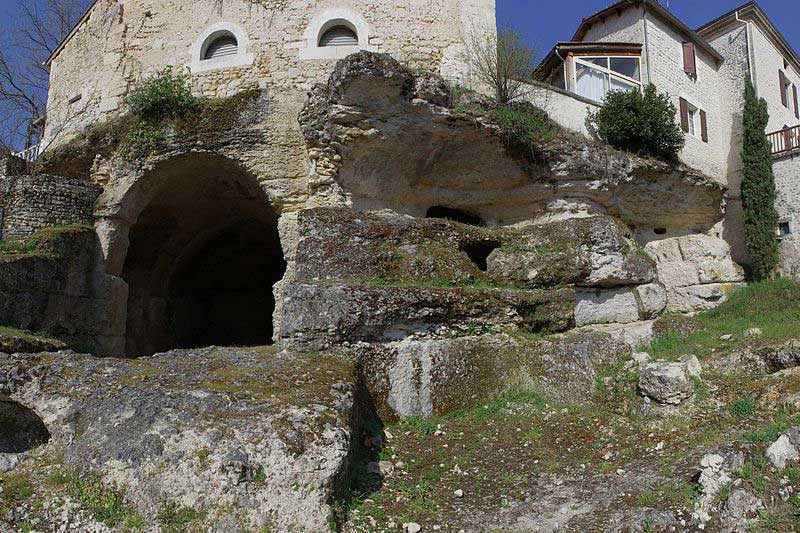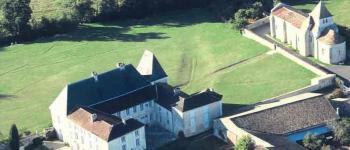
Known as the "Chapelle Saint-Georges", the rock church of Saint-Georges de Gurat dates back to the 11th and 12th centuries. Nestling in the heart of a series of hollowed-out caves, it is carved into the hillside on which the village is built, with the nave, choir and barrel-vaulted apse and the "Larcosolium", a sort of niche-shaped burial vault not far from the rock tombs.
In the 9th century, a hermit dug the first cells into the rock. The church was then enlarged until the 12th century.
This monolithic church was probably a shelter for pilgrims on their way to Santiago de Compostela, Gurat being located on a route passing through Marthon or Angoulême, Villebois-Lavalette and Aubeterre.
This church is built on the typical plan of a traditional church, with the main nave, choir and transept, but with only one aisle. The church seems to have undergone several phases of enlargement. It would appear that the 12th and 13th centuries were the golden age of the community, which declined at the end of the 14th century due to the Hundred Years' War, which led to insecurity, and lost its chevet in the 14th century.
The Wars of Religion completed the pillage of the site.
Excavations began in the 1970s and a necropolis was discovered.
It was first listed as a historic monument on October 30, 1963, then classified on May 5, 2015.
Legend...
Local legend has it that the bells of the rock church were removed and hidden in a deep spring to keep them from the English. Despite the prayers of the faithful, they never surfaced. In the 16th century, during the Wars of Religion (1562-1598), the site was sacked. The vault above the choir was destroyed, tombs desecrated and skeletons exhumed. The community dispersed. The church, which was to have been enlarged, was never completed. During the French Revolution, the church was probably used as a salpetriere, and in the 19th century as a barn, while two caves were converted into bread ovens.
The cave church of Saint-Georges de Gurat
Route de Vendoire
16320 Gurat
Tel.: 05 45 64 75 93
https://www.sudcharentetourisme.fr/fiche-sit/eglise-rupestre-saint-georges-5758362/





